Geographic Atrophy – February, 2023

History:
An 86-year-old female presented for age-related macular degeneration (AMD) evaluation and treatment. The patient had been receiving intravitreal Eylea injections in the left eye for over 2 years. She was continued on Eylea in the left eye for neovascular AMD. The right eye monitored for intermediate dry AMD. Over the following 3 years, she developed worsening dry AMD findings which are discussed below.
Exam:
Her best corrected vision at presentation was 20/30 in the right eye and 20/25 in left eye. Intraocular pressures were normal. There was no APD. Her anterior exam was significant for posterior chamber intraocular lenses in both eyes.
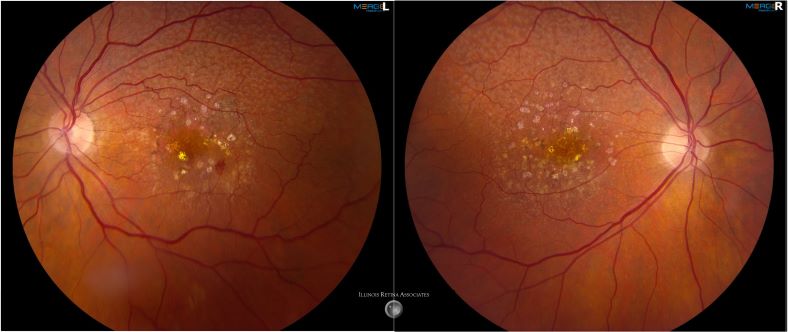
Figure 1: Fundus photo of both eyes. The left eye shows multiple large drusen in the posterior pole along with calcified drusen. There is an isolated intraretinal hemorrhage seen temporally. Superiorly, there are numerous subretinal drusenoid deposits. The right eye shows similar findings without a hemorrhage.
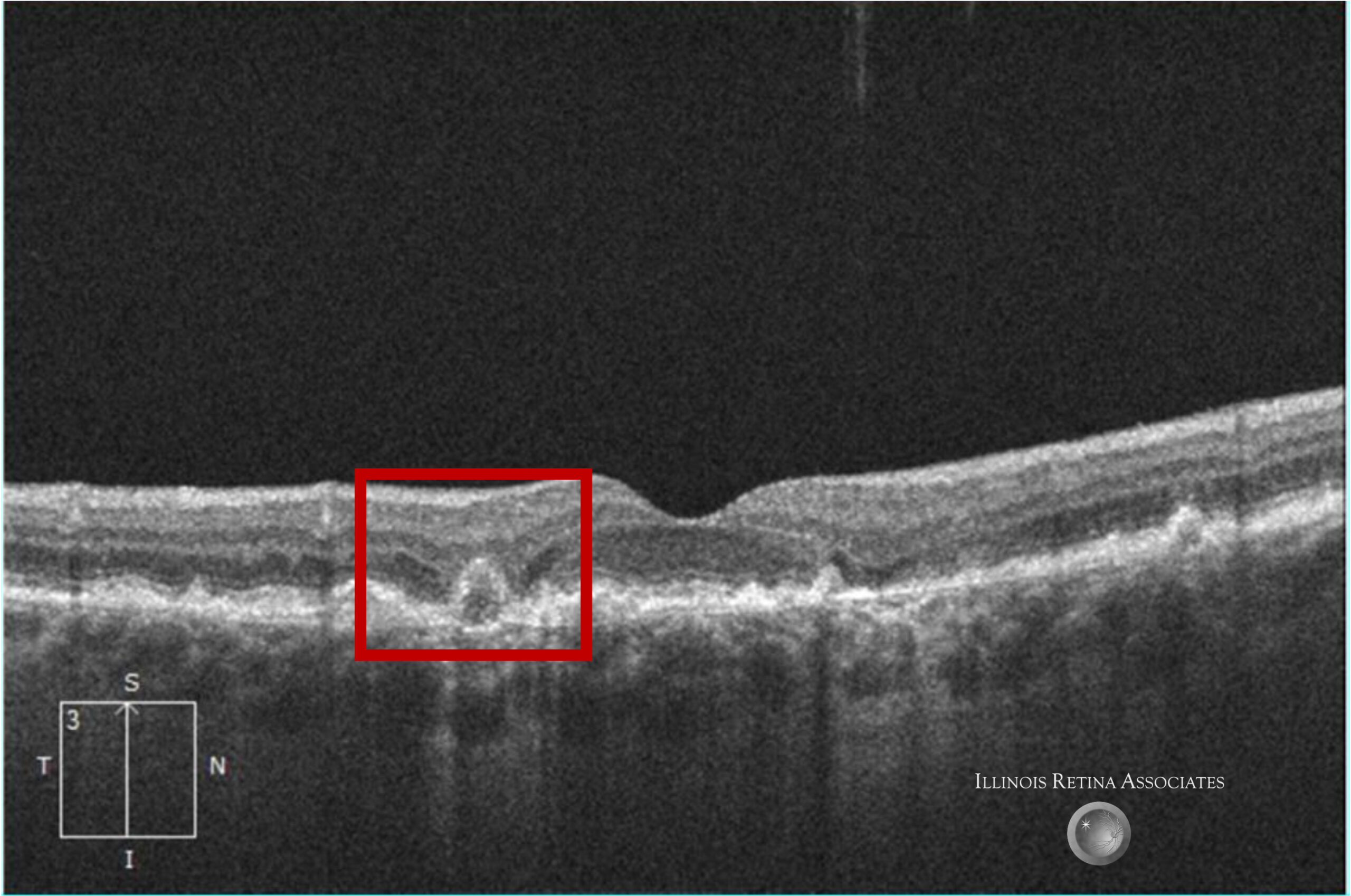
Figure 2: Initial OCT of the right eye at the time of presentation. There are multiple drusen noted. The red square highlights an area of incomplete retinal pigment epithelial and outer retinal atrophy (i-RORA).
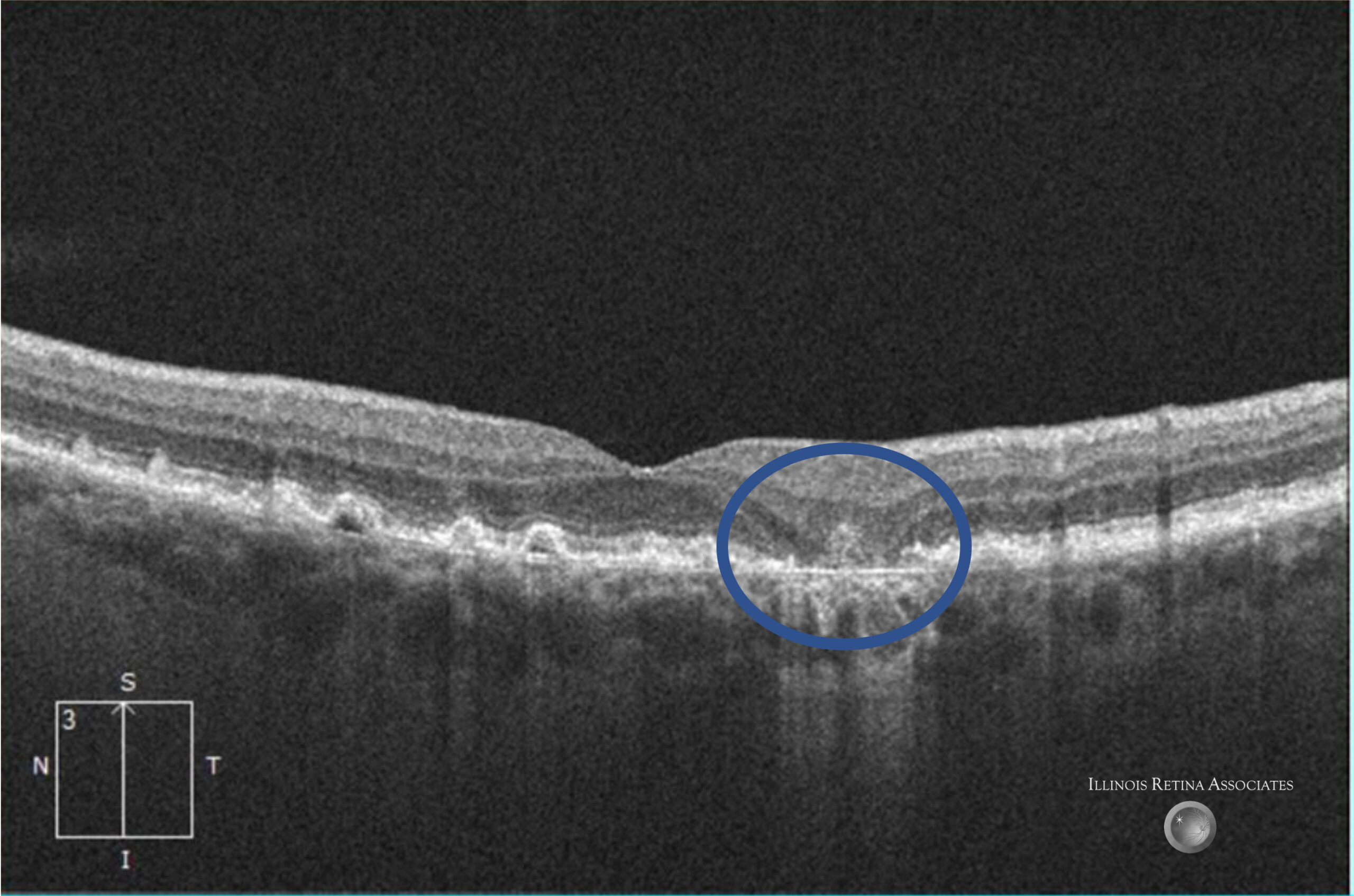
Figure 3: Initial OCT of the left eye at the time of presentation. There are multiple drusen noted. The blue circle highlights an area of complete retinal pigment epithelial and outer retinal atrophy (c-RORA).
Differential Diagnosis:
-
Choroidal neovascularization - Drusen
- Subretinal drusenoid deposits/reticular pseudodrusen
- Geographic atrophy
- Choroidal scar
Discussion:
Geographic Atrophy
The Classification of Atrophy Meeting (CAM) Report 5 (published in September 2021) provided image-based descriptions associated with the development of geographic atrophy. There were six main features highlighted in this report. First, inner and outer retinal abnormalities were described as “inner nuclear layer (INL) and outer plexiform layer (OPL) subsidence, hyporeflective wedges, external limiting membrane (ELM) descent, outer nuclear layer (ONL) thinning, ELM and ellipsoid zone (EZ) integrity loss, and hyper-transmission of the OCT signal into the choroid”. (Figure 4). Intraretinal hyperreflective foci are described as “discrete, well-circumscribed, punctate lesions in a single or clustered distribution that are of equal or greater reflectivity than that of the retinal pigment epithelium (RPE)” (Figure 5). Specific qualitative drusen and drusenoid pigment epithelial detachment features were described. Focal changes in drusen, such as thickened or thinned, disintegrated or absent RPE, lead to hypertransmission OCT changes in the choroid. This can be seen even before outer retinal tissue is lost (Figure 6). Subretinal drusenoid deposits, also known as reticular pseudodrusen, are materials that has accumulated between the RPE and photoreceptors (Figure 7). On OCT, they can appear as ribbon or dot pattern and are most commonly seen in the superior macula. Hyperreflective crystalline deposits, also known as sub-RPE plaques, are linear deposits between the sub-RPE and basal lamina (Figure 8). Acquired vitelliform lesions can be seen in multiple conditions but there are specific appearances for the ones associated with AMD. On OCT, they appear as “dome-shaped hyperreflective mound bounded posteriorly by the inner aspect of the RPE and anteriorly by the EZ, ELM, or outer aspect of the ONL” (Figure 9).
CAM Report 6 defined i-RORA and c-RORA and their findings were published in January 2022. I-RORA is defined as 1) a regional of signal hypertransmission into the choroid, 2) a corresponding zone of attenuation or disruption of the RPE, and 3) evidence of overlying photoreceptor degeneration, that is, subsidence of the INL and OPL, presence of a hyporeflective wedge in the Henle fiber layer, thinning of the ONL, disruption of the ELM or, disintegrity of the EZ. C-RORA, which is complete atrophy or geographic atrophy, is defined as 1) a region of hypertransmission of at least 250 um in diameter, 2) a zone of attenuation or disruption of the RPE of at least 250 um and, 3) evidence of overlying photoreceptor degeneration.
The CAM Reports provide standardized terms and descriptions of AMD which allow for interpretation and assessment of early AMD stages and atrophic changes. This allows for better counselling of patients on their possible progression to central or visually significant atrophy. As new medications are approved for geographic atrophy, early identification of these findings will become increasingly important.
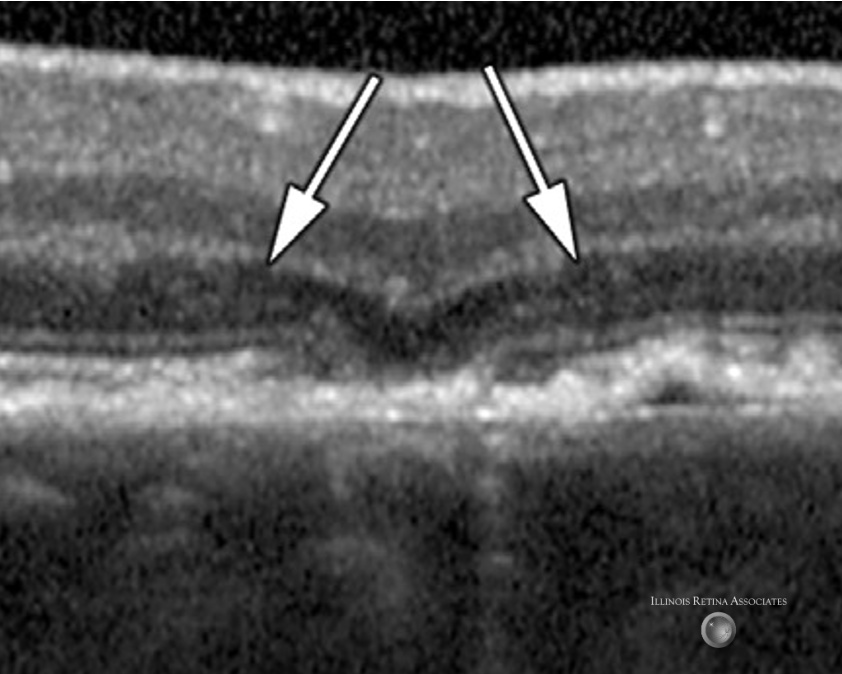
Figure 4

Figure 5
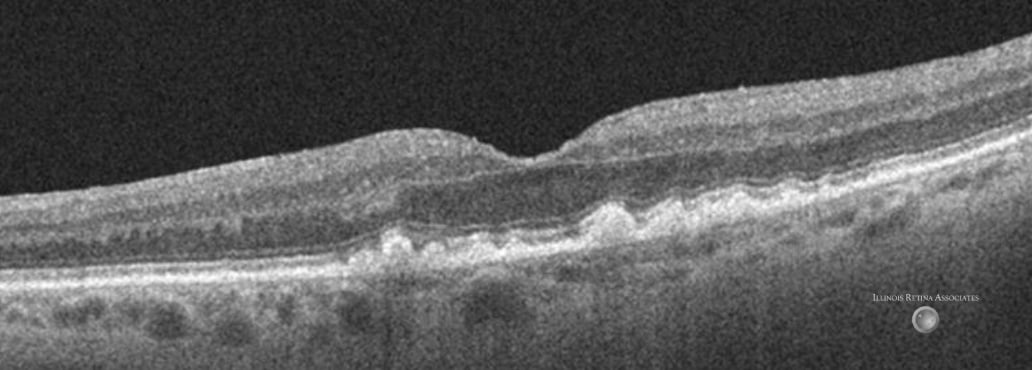
Figure 6
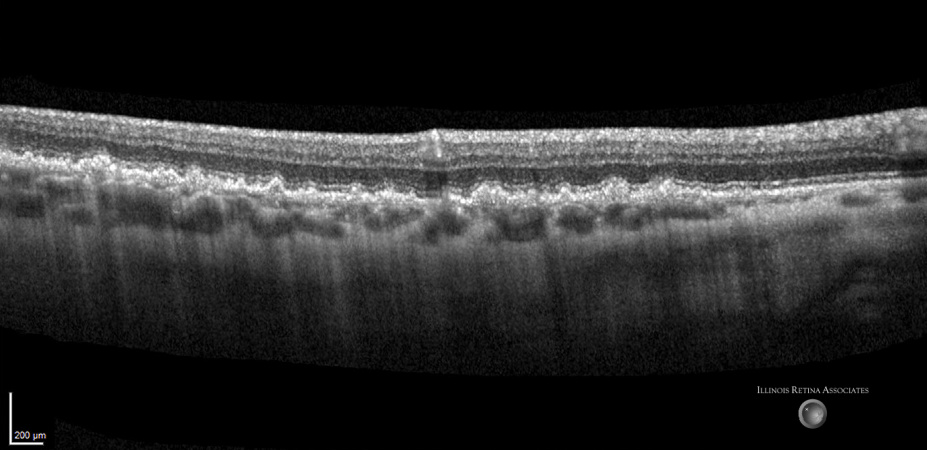
Figure 7

Figure 8

Figure 9
If you are looking to schedule your first consultation, please contact us today by clicking HERE and find the location that is nearest you!
References:
-
Chiang, J. N., Corradetti, G., Nittala, M. G., Corvi, F., Rakocz, N., Rudas, A., Durmus, B., An, U.,Sankararaman, S., Chiu, A., Halperin, E., & Sadda, S. R. (2022). Automated Identification of Incomplete and Complete Retinal Epithelial Pigment and Outer Retinal Atrophy Using Machine Learning. Ophthalmology Retina. https://doi.org/10.1016/j.oret.2022.08.016.
- Wu, Z., Pfau, M., Blodi, B. A., Holz, F. G., Jaffe, G. J., Liakopoulos, S., Sadda, S. R., Staurenghi, G., Bjelopera, E., Brown, T., Chang, P., Choong, J., Corradetti, G., Corvi, F., Domalpally, A., Hurtenbach, C., Nittala, M. G., Olson, A., Pak, J. W., … Schmitz-Valckenberg, S. (2022). OCT Signs of Early Atrophy in Age-Related Macular Degeneration: Interreader Agreement: Classification of Atrophy Meetings Report 6. Ophthalmology Retina, 6(1), 4–14. https://doi.org/10.1016/j.oret.2021.03.008.

